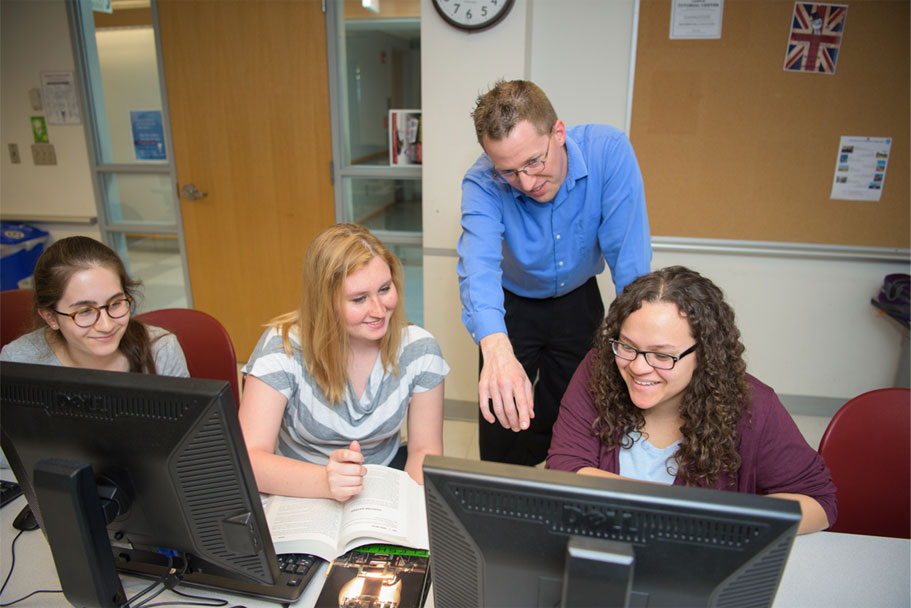
Most Americans believe that robots and computers will perform much of the work currently done by humans at their jobs within the next 50 years. In fact, a Pew Research Center poll released last month shows that 65 percent of the public believes that is likely to be the case.
Three students at Southern who are interested in pursuing a career in writing – two English majors and a journalism major – explored the trend toward the use of artificial intelligence in the workplace. They focused their research on the potential effect on writing professions – ranging from journalism to technical writing to medical writing to poetry.
The students – Chelsea Green, Melanie Espinal and Kaylin Tomaselli – will share their findings in a poster presentation April 23 during the SCSU Undergraduate Research and Creativity Conference. The conference, to be held from 8 a.m. to 5 p.m. in the Michael J. Adanti Student Center, will feature posters and oral presentations from more than 150 students. The event will be headquartered in the Grand Ballroom, but also will include various other rooms in the student center.
Green, Espinal and Tomaselli currently are conducting their research as part of an English class, “Writing for Business and Industry,” taught by Jason Lawrence, assistant professor of English.
Among the trends they found are:
- Kismet, a humanoid robot with eyes that was created at the Massachusetts Institute of Technology in the late 1990s, has been learning “social cues” and uses “facial expressions” of its own.
- The What-If-Machine (WHIM) research project in Europe is teaching computers to understand humor, metaphor and sarcasm.
- Computers have written novels and poems that are sometimes indistinguishable to those written by people.
But while the students, based on their research, believe that robots will be doing some of the more menial writing tasks – such as writing basic, data-driven reports, and obituaries in newspapers – they are optimistic that skilled writing jobs will still require humans in 50 years.
Espinal pointed to an example of a reporter interviewing someone for a story, particularly a controversial one. “You can lie to a machine,” she said. “But it’s much harder to lie to a real person, especially when a reporter can ask more probing questions.”
She said while the technology is improving, a robot is unlikely to be the equal of an experienced, inquisitive reporter.
Green agreed. “Part of a good profile story brings in an individual’s personality traits,” she said. “A robot is not able to do that the way a real person can.”
Tomaselli said having robots to do menial work is fine. “The important thing for us to keep in mind is that they should be working for us, not the other way around,” she said.
Lawrence said the use of artificial intelligence in the writing professions is the theme of his course this semester.
“I actually got the idea for this topic a couple of years ago when I was living in Utah and my kids were attending elementary school,” Lawrence said. “The school used software developed by a North Carolina company to grade papers. The claim was that the computer was a more accurate grader than the teachers. And we weren’t talking just about spelling or grammar. The computer was assessing writing skills such as originality, organization and persuasiveness.”
Lawrence said that got him thinking about whether computers and robots can actually write, and how that might affect the workplace. “My hope is that we can use robots, computers and other forms of artificial intelligence in a symbiotic way, rather than looking at it as an ‘us vs. them’ kind of relationship.”

